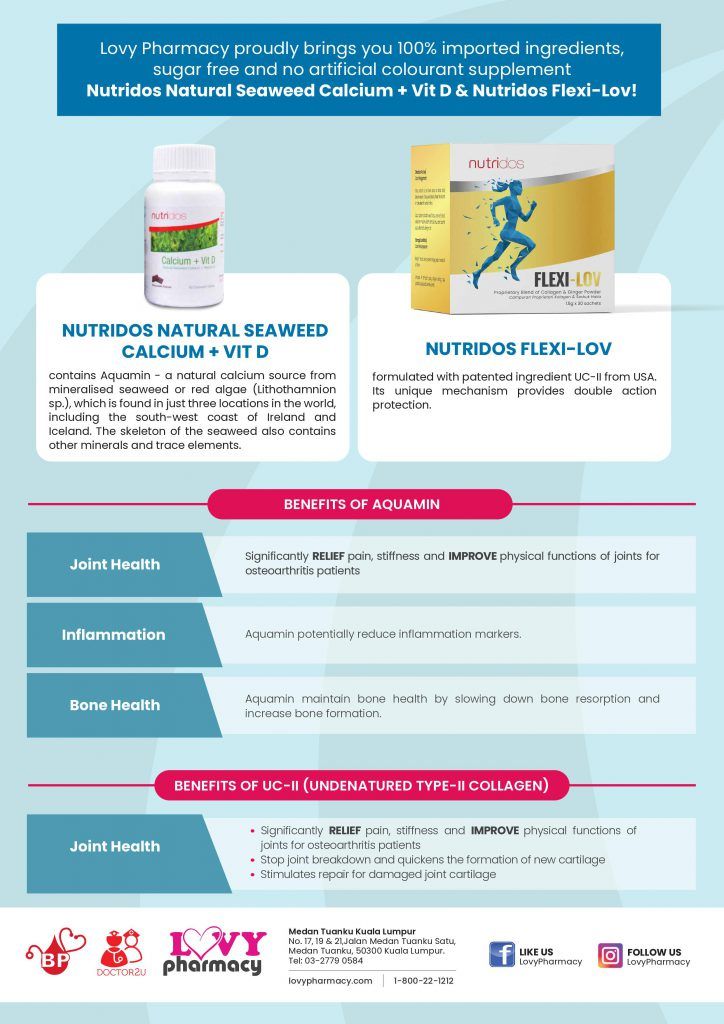02 May 2023 | Article is written by Ng Jia Yin (Nutritionist, Lovy Pharmacy)
Welcome back to the workplace after Labour’s day holiday and again, Happy Labour’s Day to all the workers of every field! We hope you had a good rest and may you all be blessed with the sweetest fruits for all the labor you have put into your work. At the same time, do not forget that health is wealth, as we need a healthy body to contribute to our family, our company and our country.

Malaysian Employees are Overworked, Sleep-Deprived, & Unhealthy


Source: theedgemarkets, February 10, 2020
According to a survey done by the Malaysia’s Healthiest Workplace by AIA Vitality 2019, it revealed that:
- 4% of respondents reported that they were suffering from at least one or more musculoskeletal conditions
- 17% of respondents reported that they felt tired and fatigue every single day
- 32% of respondents reported that they have one or more chronic conditions (kidney conditions, high blood pressure, high cholesterol, diabetes, heart disease, stroke or cancer)
- 90% of employees do not eat a balanced diet
- 42% of employees are either overweight or obese
Job Place Stress: A Silent Killer of Employee Health and Productivity
Job stress is defined as the harmful physical and emotional responses that occur when the requirements of the job do not match the capabilities, resources, or needs of the worker. It can lead to poor health and even injury. These effects occur in a continuum and lead to poor company productivity.
Some physical health problems linked to workplace stress include immune deficiency disorders, musculoskeletal disorders such as chronic back pain, and gastrointestinal disorders such as irritable bowel syndrome. Meanwhile, workplace stress also brings effects on worker’s mental health, such as increased risk of anxiety, depression, and substance use disorders. Workers who are stressed at work tend to practice unhealthy behaviors, such as excessive cigarette smoking, alcohol and drug abuse, and poor dietary habits.
Work-Life Balance: How important is it?
We can’t deny that work-life balance carries an important role but it is often overlooked. Work-life balance is about achieving balance and satisfying strategies that could accommodate work and life. It is a crucial aspect in a healthy working environment, as it helps in maintaining mental health, physical health, and increasing employees’ productivity.
However, employees generally face these common work-life balance disruptions, which may cause them to feel extra stressful.

How to create Work-Life Balance?
Hence, on this day, we are here to remind you to have more self-care and self-love in your everyday life, because both your physical and mental health matter!
Relaxing and relieving your stress could be simple. Having a good nutritious meal could help, while activity as simple as having a short brisk walk after work could also help. All it takes is a little bit of your time and it could boost your mood and health extensively.
Examples of Simple, Quick, Nutritious Meal and Leisure Activities


Always remember that a balanced, healthy diet does not necessarily have to be complicated and hard to prepare, and as far as we know work is important, your health and well-being are even more important. Always find time for yourself, and a rest is an essential, preparatory step for a longer journey ahead!
Reference
- Ram, B. S. (2019, November 15). Survey: Malaysian employees are overworked, sleep deprived, unhealthy. New Straits Times. Retrieved March 25, 2023, from https://www.nst.com.my/news/nation/2019/11/539026/survey-malaysian-employees-are-overworked-sleep-deprived-unhealthy
- The Edge Markets. (2020, February 10). Millennials are the most stressed-out generation at work. The Edge Markets. Retrieved March 25, 2023, from https://www.theedgemarkets.com/content/advertise/millennials-are-most-stressedout-generation-work
- Corporate Wellness Magazine. (n.d.). Workplace Stress: A Silent Killer of Employee Health and Productivity. Corporate Wellness Magazine. Retrieved March 25, 2023, from https://www.corporatewellnessmagazine.com/article/workplace-stress-silent-killer-employee-health-productivity
- Talent Intelligence. (n.d.). 3 Factors that Affect Work-Life Balance. Talent Intelligent. Retrieved March 26, 2023, from https://www.talentintelligence.com/3-factors-that-affect-work-life-balance/
- SpriggHR. (2020, February 6). The Importance of Work-Life Balance. SpriggHR. Retrieved March 27, 2023, from https://sprigghr.com/blog/performance-culture/the-importance-of-work-life-balance/


















